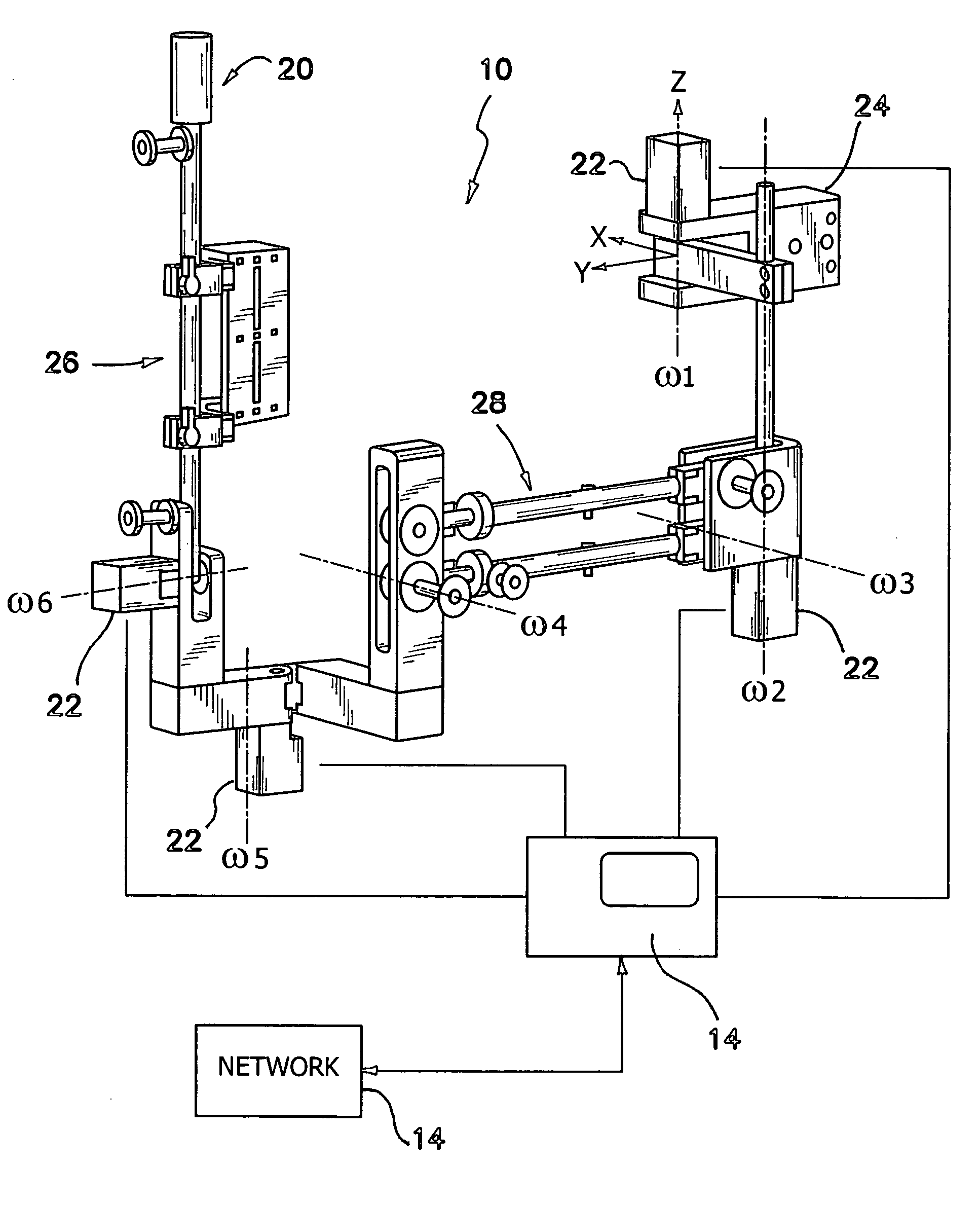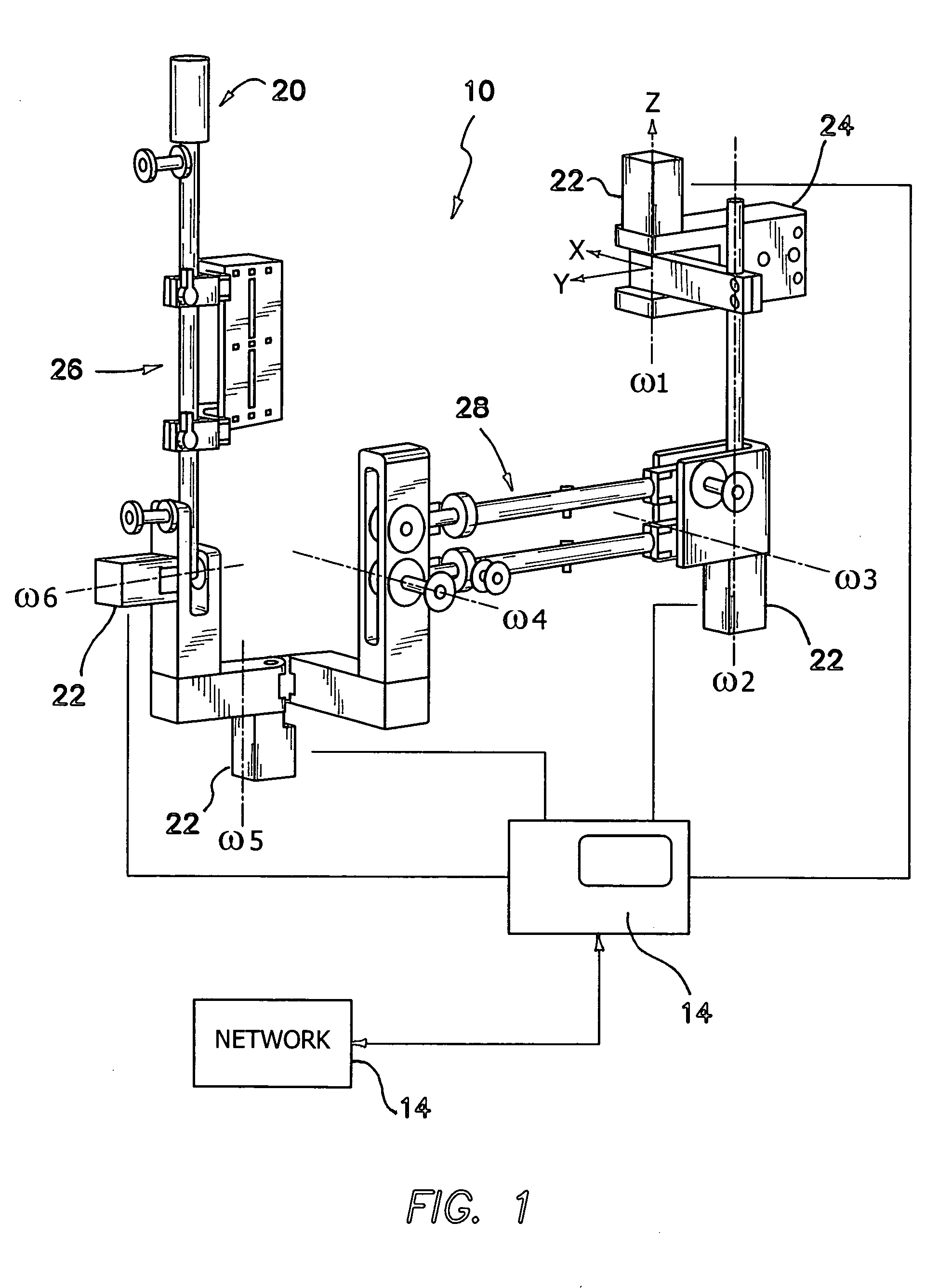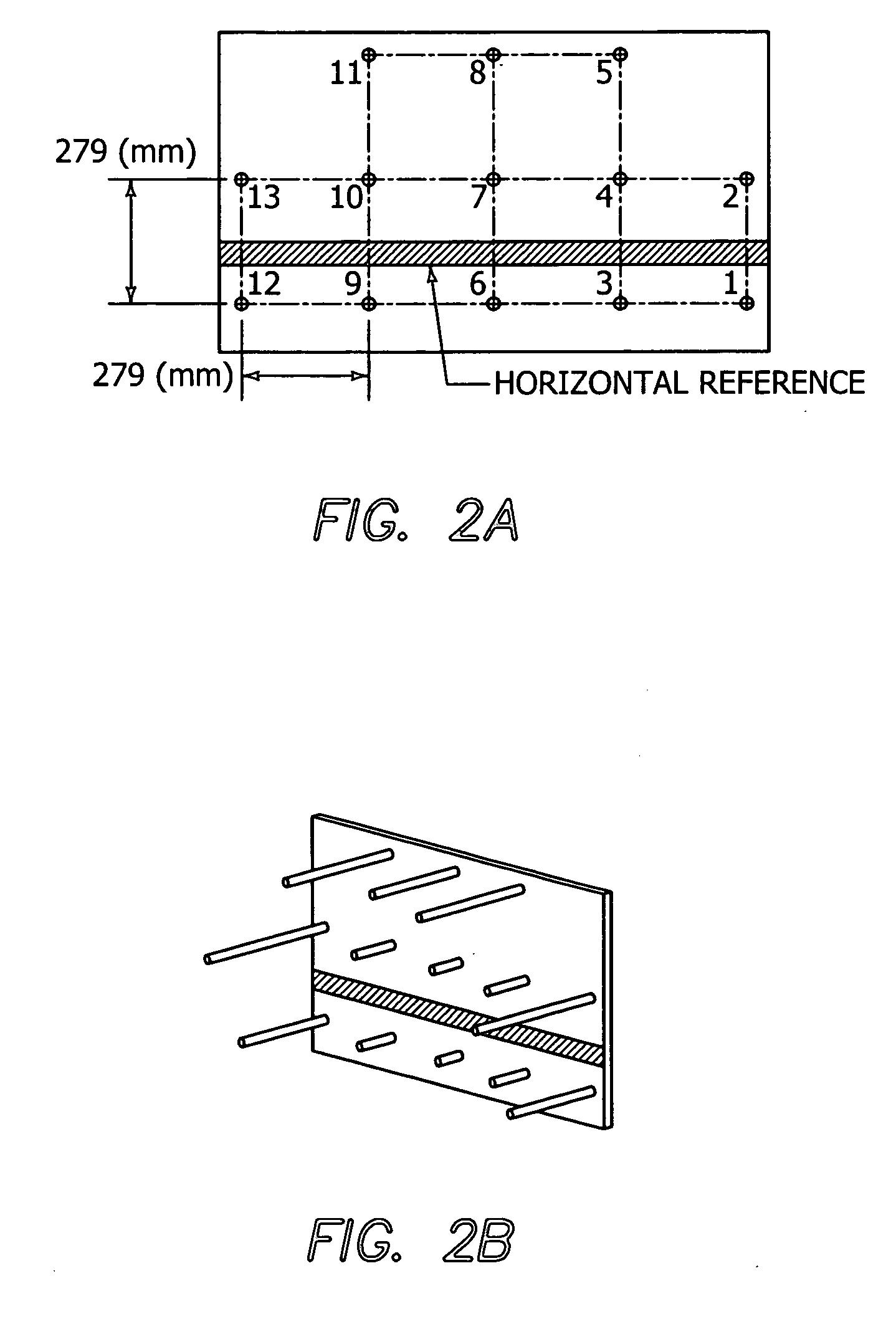Method and apparatus for automating arm and grasping movement training for rehabilitation of patients with motor impairment
- Summary
- Abstract
- Description
- Claims
- Application Information
AI Technical Summary
Benefits of technology
Problems solved by technology
Method used
Image
Examples
Embodiment Construction
[0031] An important goal in rehabilitation engineering is to develop technology that allows individuals with severe motor impairment to practice arm movement without continuous supervision from a rehabilitation therapist. A first embodiment is illustrated by a system, called Therapy WREX or (“T-WREX”) 10. The system 10 is comprised of an orthosis that assists in arm movement across a large workspace, a grip sensor 20 that detects hand grip pressure, and software controlled computer 14 that simulates functional activities. The arm orthosis is an instrumented, adult-sized version of the Wilmington Robotic Exoskeleton (WREX), which is a five degrees-of-freedom mechanism that counterbalances the weight of the arm using elastic bands.
[0032] After providing a detailed design description of T-WREX 10, this disclosure describes two pilot studies of the system's capabilities. The first study demonstrated that chronic stroke subjects whose arm function is compromised in a normal gravity envi...
PUM
 Login to View More
Login to View More Abstract
Description
Claims
Application Information
 Login to View More
Login to View More - R&D
- Intellectual Property
- Life Sciences
- Materials
- Tech Scout
- Unparalleled Data Quality
- Higher Quality Content
- 60% Fewer Hallucinations
Browse by: Latest US Patents, China's latest patents, Technical Efficacy Thesaurus, Application Domain, Technology Topic, Popular Technical Reports.
© 2025 PatSnap. All rights reserved.Legal|Privacy policy|Modern Slavery Act Transparency Statement|Sitemap|About US| Contact US: help@patsnap.com



